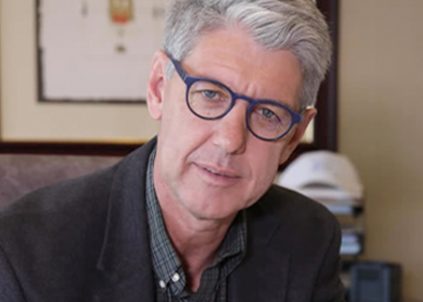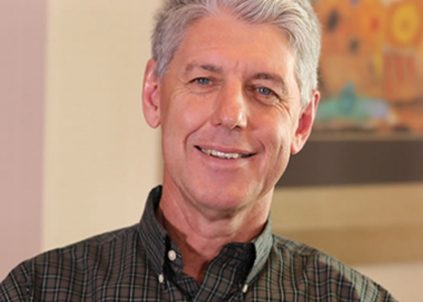The Bus Driver and the Rugby Ball: How to Boost Turnover by over 20%
Published: 18th July, 2019

By Len Brand, CEO, Tata International Africa.
One of the achievements I am most proud of has been the turn-around success we’ve had at Tata International in Africa over the past two-and-a-half years. Looking back at this success I realise that the strategy our team applied not only held some valuable insights and learnings for us as an organisation, but also for those outside of our business. Thus the reason for writing this article, hoping it may inspire and motivate others in their attempts to breathe new life into their own enterprises. I sincerely hope it doesn’t come across as arrogant or boastful.
Reality check
When I accepted my current position in August 2016 the business had been making losses for three consecutive years and was facing yet another loss. I had been on the Tata International Holdings Board as an independent director for 18 months at that stage and was well aware of the scale of the turnaround challenge that lay ahead.
When I attended my first Board meeting as CEO, I was very frank about its unrealistic expectations of transforming the business in three months, and offered rather an 18-month turnaround, with a proposed goal of doubling turnover in four years, from 2017 to 2021.
I also expressed my concerns about the decision they had made back in 2012 and 2013, to de-risk the company and create more than a dozen trading companies. I explained that diversity equals risk, and moving forward we would have to go back to the original and singular focus of the business – the distribution of commercial vehicles.
I definitely stepped on a few toes, but I knew it was my responsibility to stand by my convictions. It took me a full year to convince the Board that their de-risk strategy had been a mistake, and get approval to sell or close those businesses that didn’t fit our focus moving forward. It was an extremely difficult process. Eventually we sold four, and closed a further 10, where there was nothing left to sell.
Right people on the bus
For any business to be a success, you’ve got to have the right people on the bus. This is an analogy created by Jim Collins which really resonates with me. Essentially, you – the leader – are the bus driver. When the bus, your company, is at a standstill, it’s your job to get it going again. You have to decide where you’re going, how you’re going to get there, and who’s going with you.
First, you’ve got to get the wrong people off the bus. And you have to start at the top. Those who want to be a boss must go. A leader is not a boss, and a leader should not be allowed to act like a boss. During that process we had to let some senior people in critical positions go.
Then you’ve got to get the right people in the right seats. We started blatantly headhunting senior management to fill the key seats on the bus. We handpicked people we knew well. Some I had worked with in the industry for many years.
Once you’ve filled your bus with the right people in the right seats, it becomes less a question of where you’re headed, but rather how far you can go.
Hard on the numbers, soft on the people
If you want to get that bus moving again, you have to have to create an environment where your people want to come to work every day. You should be hard on the numbers, but soft on the people. Your people need to know they have to achieve the numbers and you’re not willing to compromise on standards but they also need to know that they matter, and they will always be treated with dignity and respect.
It’s all about uptime
When setting the new direction for your business, and articulating your strategy, you need to make it easy for your people to relate to and understand. ‘It’s all about uptime’ is the business mantra we created to emphasise our core focus moving forward.
In essence, uptime is the opposite of downtime. For commercial vehicles like trucks and buses, uptime is the period when that vehicle is up and running, and downtime is when it’s off the road for maintenance or repairs. When human capital or other assets go down, the business suffers financially. So, the quicker we can get that vehicle back on the road, helping its driver or owner to earn an income, the better.
This was the backbone of our strategy. Vehicle price, running costs, and fuel consumption do matter, but uptime matters more.
The four-year football
I used the football concept to illustrate the life paths of our strategy. The seams on the ball represent the five main areas of the business we needed to focus on, namely: improving access to parts and service, ensuring a comprehensive product offering, providing customers with financing options, expanding our distribution network and footprint across the continent, and increasing brand awareness.
The seams all share a common starting point and a common end point. In between, they run parallel to one another, and along each seam there are different projects. On the one seam you may have 12 projects, on another you may have only three. Unlike pillars, which feel like silos, these converging lines give a sense of being interconnected – which different areas of the business are, or at least should be.
If all your people have sight of the end goal, and know where their work fits into the bigger picture, it’s so much easier for them to focus on what needs to get done, and pull together to create a, dare I say, more seamless operation.
On track to target
At the close of our 2018 fiscal year, Tata Africa had managed to achieve a more than 20% jump in turnover, and we continue to penetrate the markets and make market share gains.
The business is still in the process of realigning itself, and we’ve still got a long way to go to reach our goal of doubling turnover by 2021. But the strategy is cemented. The Board is behind it. Our people believe in it. Today, if you talk to any Tata Africa employee, they will tell you about uptime, and they will be able to quote the five life paths on the football.
Now it’s all about execution, execution, execution, and defining benchmarks for the continued growth and success of the business.
Note: Prior to his position as CEO at Tata International Africa, Len Brand spent 22 years focussed on agricultural mechanisation equipment, and golf and turf equipment, in sub-Saharan Africa, Germany, and the United States, six of which were spent in the role of MD at John Deere Sub-Saharan Africa.
Related posts

In April 2020 the Covid-19 pandemic brought Tata International Africa to a standstill,...

Len Brand, Chief Executive Officer at Tata International Africa Distribution Vertical, has travelled...

By Len Brand, CEO, Tata International Africa. Businesses are dependent on the social,...
